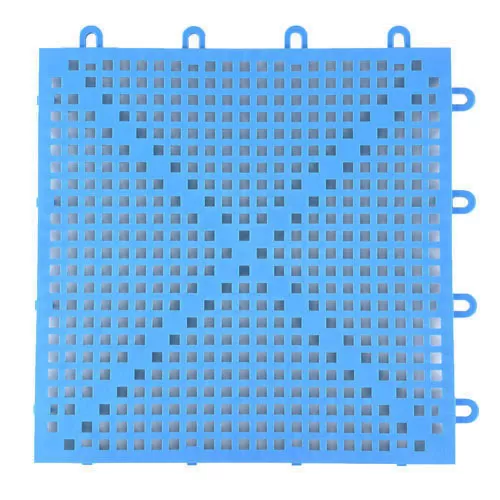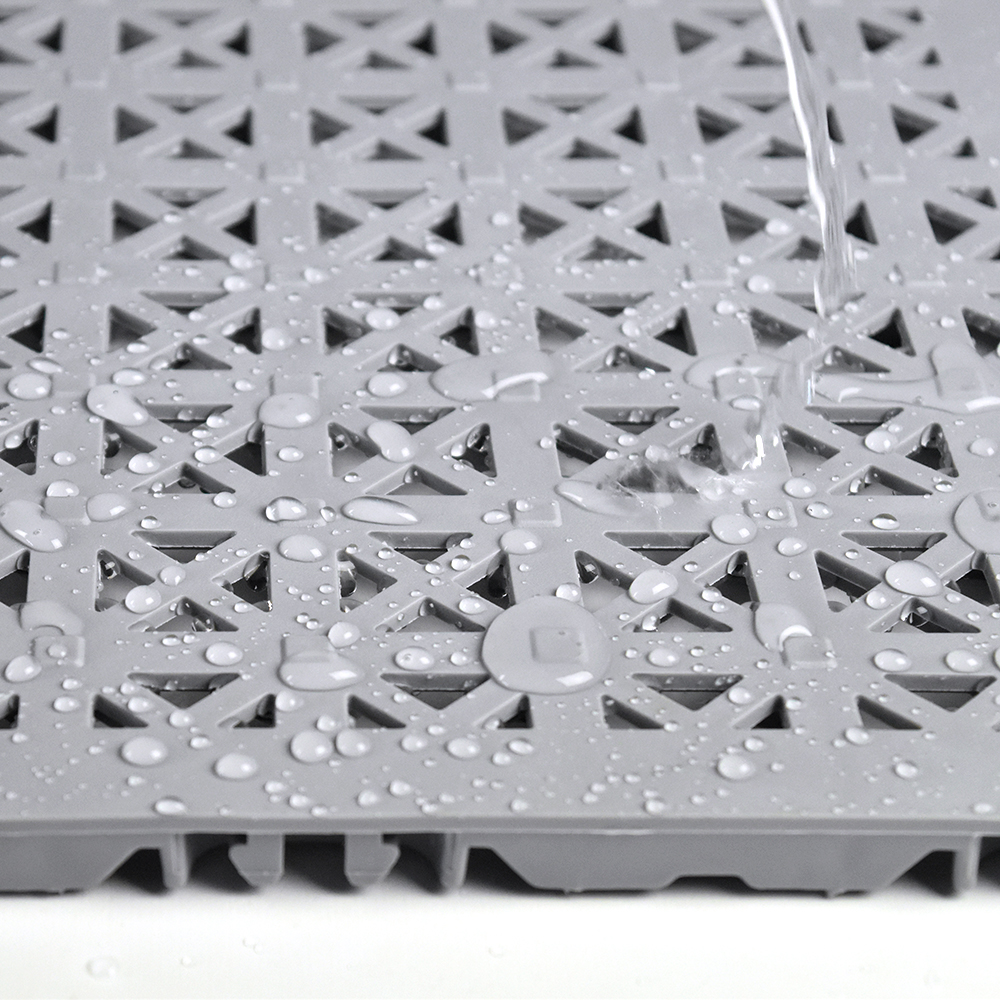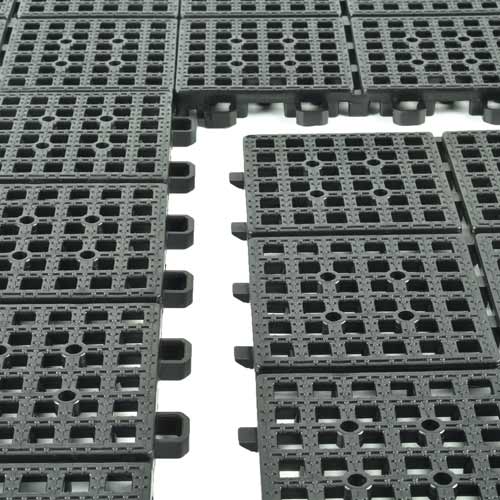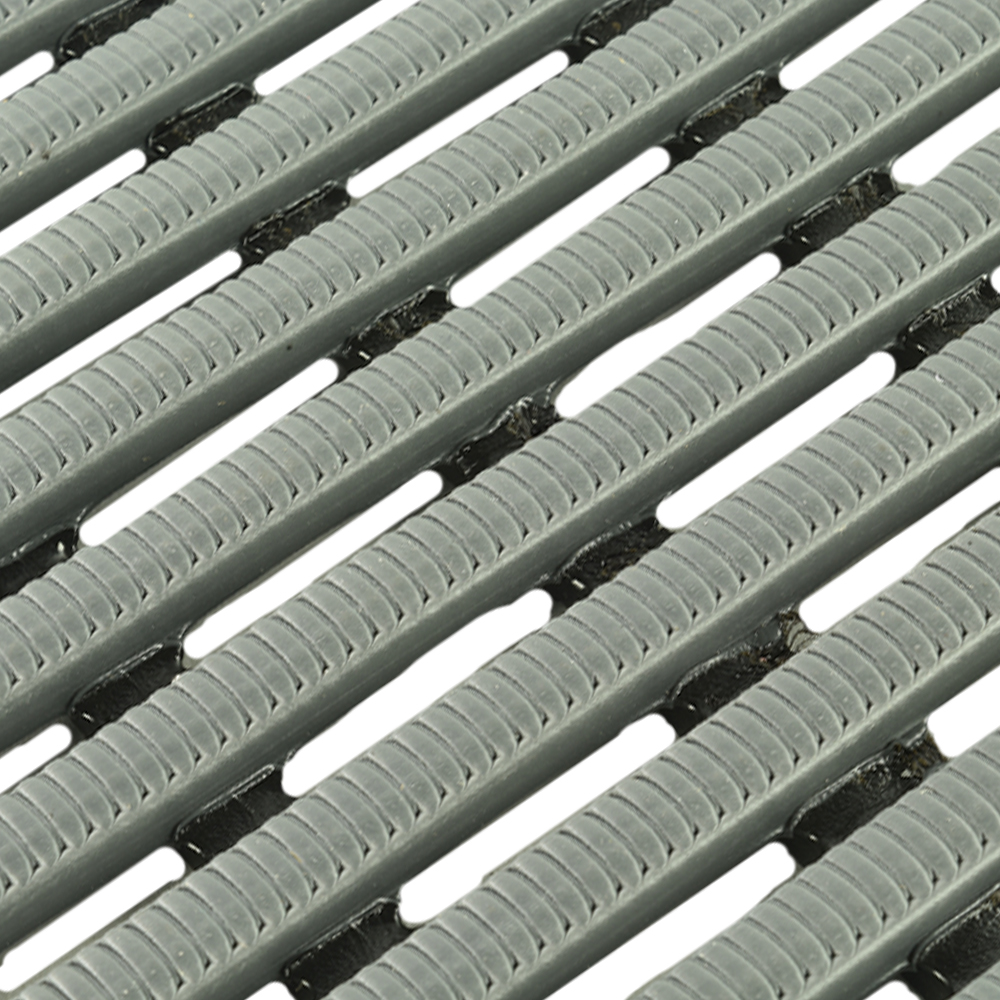What Kind of Floor Mats and Material Work Best in a Sauna?
Related Product: SoftFlex Floor Tile 3/8 Inch x 1x1 Ft.
Foam rubber and PVC plastic are among the top materials for this use case. The best products for sauna floor ideas include:
Whether the sauna installation occurs at home, in a hotel suite, in a fitness center, or in a spa, selecting the right floor to use is an easier process when you have an understanding of how these floors work.
Should You Cover the Concrete in the Sauna?
In many sauna installations, the subfloor will consist of concrete. After sealing the concrete to give it waterproof capabilities, you then can place other types of flooring material over the top of the concrete for comfort and safety.When dry, concrete is fine as the primary flooring in a sauna. However, a sauna rarely is a dry environment, becoming damp from steam and moisture. Once concrete becomes damp, it creates a slipping hazard in the room. Placing sauna floor mats over the top of the concrete creates an environment that’s safer for walking.
If desired, customers can place other types of flooring over the top of a wood floor in a sauna. Sauna floor mats and tiles offer a nice level of cushioning for those walking on them versus the concrete or wood.
The flooring could have some insulative properties, too, helping to hold the heat inside the sauna room, rather than allowing it to escape through the subfloor.
For sauna floor ideas as a temporary option, look for interlocking floor tiles that pop together quickly. Should the installer want to remove the flooring or replace it in the future, being able to lay out the tiles or mats without the need for adhesive is important.
Are There Sauna Floor Mats With Perforations in the Material?
With perforations in the sauna floor mats, any water that collects on the surface of the flooring will drain away to the subfloor, reducing the possibility of slipping in a pool of water. The perforations extend through the entire thickness of the tile, yet they don’t affect the integrity of the flooring.These tiles consist of PVC plastic, which has a bit of flexibility to it, greatly simplifying the installation. PVC has a cushioned design that’s also highly durable. It will stand up well to the heat inside the sauna, and it’s safe to use around the heating element in a sauna, resisting the possibility of a fire.
Here are four sauna flooring options with perforations.
SoftFlex Floor Tiles
 The SoftFlex Floor Tiles consist of waterproof materials, making them ideal for the damp environment of a sauna room. They will not allow the formation of microbes, keeping the area as safe as possible.
The SoftFlex Floor Tiles consist of waterproof materials, making them ideal for the damp environment of a sauna room. They will not allow the formation of microbes, keeping the area as safe as possible.
Along with the perforations in the tiles, the underside includes a series of pegs and drainage channels that further simplify the process of moving water away from the area.
Each tile measures only 3/8 inches in thickness, while covering a space of 1 by 1 foot. Should the installer need to cut the tiles to fit against the side of a sauna wall, it’s easy to cut through the PVC material with a sharp utility knife.
The SoftFlex brand of tile has some neutral and bright colors that will complement the style of any sauna room, including in a commercial setting. Some of the colors include charcoal, light gray, warm gray, tan, ocean blue, and teal green.
Patio Outdoor Tiles
 For another easy-to-install type of PVC tile with perforations that extend through the entire material, consider the Patio Outdoor Tiles product.
For another easy-to-install type of PVC tile with perforations that extend through the entire material, consider the Patio Outdoor Tiles product.
Beyond being one of the best sauna floor ideas, these tiles provide outstanding results in a number of other wet locations, including showers, locker rooms, pools, hot tubs, and boats. They have UV stability built in, meaning they will work equally well indoors or outdoors.
The design of the Patio Outdoor Tiles model includes pegs on the underside of the tile, which lifts the tile away from the subfloor and allows any moisture to drain away faster versus a solid tile.
Those who install and use this tile in a sauna always give it a great review, as it has a high level of durability and flexibility.
Each tile measures just shy of 1 by 1 foot and has 1/2 inches of thickness, which makes the installation process go fast, even as a DIY project. Four color options are available of gray, terra cotta, tan, and blue.
Heronrib Wet Area Safety Matting Rolls
 To cover quite a bit of space quickly in the sauna with a perforated flooring, consider the Heronrib Wet Area Safety Matting Rolls. These are great sauna floor mats, as they roll out easily, providing comfort for those who will be walking across the material in bare feet.
To cover quite a bit of space quickly in the sauna with a perforated flooring, consider the Heronrib Wet Area Safety Matting Rolls. These are great sauna floor mats, as they roll out easily, providing comfort for those who will be walking across the material in bare feet.
When it’s time to clean the subfloor in the sauna, just roll up this material and perform the cleaning routine before installing the roll again.
Colors in the matting include white, charcoal gray, oxford blue, ocean blue, forest green, black, buff, and mulberry red. Each roll measures only 10 mm in thickness (about 3/8 inches), which simplifies installation.
With a size of 2 by 33 feet, installers receive a good value with this roll of PVC plastic, either for a thermal barrier in the floor or for a slip-resistant flooring.
What’s the Best Way to Care for the Flooring in the Sauna?
After installing tiles or rolls over the subfloor of the sauna, it’s important to maintain them properly to receive the longest possible lifespan from the products. Some of the techniques owners should use to keep these materials clean in the sauna include:- In a dry sauna, cleaners can use a vacuum or a broom to sweep any dry debris from the surface of the tiles.
- For a wet sauna environment, using a damp mop with hot water should provide the basic cleaning required.
- For those times when performing a deeper cleaning, look through the care instructions for the tiles to find a safe cleaning solution.
- For removing soils or stains, cleaners can use a soft bristled brush to scrub the material without damaging it.
- Rinse the tiles with a gentle setting on a pressure washer or with clean water and a mop.
- All of the flooring options mentioned above can be removed for a deeper cleaning of the subfloor and then re-installed.






